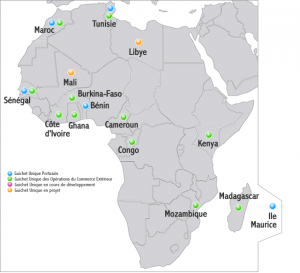
BURKINA FASO
 | Logo |
Manager
Historique
Services
Présentation
 |
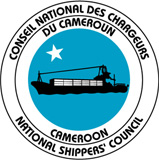 |
- Formation Le CNCC conçoit et diffuse pour les chargeurs et autres intervenants dans la chaîne des transports des modules de formation (sessions de formation trimestrielles et gratuites, des modules de formation spécifiques à la demande et des sessions de formation délocalisées) en vue d’accroître leurs performances et de favoriser l’expansion de leurs activités.
- Information Des publications réalisées par le CNCC offrent aux chargeurs des informations pratiques et diverses sur les transports et le commerce international. Pour contribuer à la facilitation du commerce international, les TIC sont mises à contribution par le CNCC à travers diverses plateformes que sont les différents portails du CNCC et le Bordereau Electronique de Suivi des Cargaisons (BESC) en ligne, pour le suivi des marchandises qui entrent et qui sortent du territoire.
- Défense des intérêts des chargeurs Elle porte principalement sur le suivi du taux de fret. L’objectif visé est de faciliter le transport des produits à des conditions optimales de coût pour les chargeurs et suffisamment rémunératrices pour les armateurs et autres intervenants de la chaîne.
- Etudes Le CNCC organise régulièrement des cadres d’échanges et la production de plusieurs études visant à faciliter l’acheminement des produits aux fins d’améliorer la compétitivité sur le marché international, de connaître les acteurs du système de transport dans leurs organisations, leurs fonctionnements et leurs besoins afin de leur apporter une assistance et des conseils appropriés.
- Promotion du Commerce Extérieur Au regard de ses missions fondamentales dans le secteur des transports et du commerce international, le CNCC s’est vu octroyer la gestion du Bordereau Electronique de Suivi des Cargaisons (BESC). Le BESC couvre les besoins statistiques, d’identification, de contrôle des coûts de transport, de sûreté et de traçabilité du commerce et du trafic des marchandises en provenance ou à destination du Cameroun. Plus concrètement, le BESC permet d’établir des “Cahiers Statistiques” publiés régulièrement par le CNCC.
- Conduite des activités de facilitation des échanges Le CNCC oeuvre considérablement à la facilitation et à la simplification des échanges commerciaux du Cameroun. A cet égard, il assure le Secrétariat Permanent du Comité National de Facilitation des Echanges (CONAFE). Le CNCC est par ailleurs chargé de la coordination générale du processus d’application de l’amendement de la convention SOLAS sur la pesée obligatoire des conteneurs au Cameroun.
 |
 |
- Procédures électroniques,
- Simulateur de droits et taxes de douane,
- Tracking de conteneurs,
- Prévision d’escale,
- Paiement électronique des droits et taxes de douane
- Simplification et facilitation des procédures du commerce extérieur
- Réduction des coûts et délais de passage des marchandises
- Une hotline à votre écoute tous les jours ouvrables
- Un bureau de facilitation pour saisir et suivre votre dossier sur place
- Un centre d’information et de conseil pour vous renseigner
- Un guide des procédures dématérialisées et du commerce transfrontalier
- Une présence effective sur les réseaux sociaux
 |
 |
COTE D’IVOIRE – Webb Fontaine CI
 |  |
Manager
Historique
Services
Présentation
 |
Logo |
ILES MAURICE – MACCS
 |  |
Member MACCS Mauritius Carco Community Services
Manager
Historique
Services
Présentation
KENYA – KENTRADE
 |  |
Member KENTRADE Kenya Trade Network Agency
Manager
Mr. Alex Kabuga is the Chief Executive Officer of Kenya Trade Network Agency (KenTrade) and is responsible for giving direction and leadership towards Implementation of the Kenya National Electronic Single Window System including (Kenya TradeNet System) the day-to-day operations of the organisation.
He is currently the Vice – Chairman of African Alliance for e-Commerce (AACE) representing East Africa. AACE is a framework for exchange and sharing on trade facilitation in Africa that aims to promote the concept of national and regional single window in compliance with recommendations of international institutions.
He has over 15 years wealth of experience in the areas of trade facilitation, trade logistics, and business process re-engineering, market development and export and sectorial strategy development including experience in managing technical assistance projects. Prior to his appointment as the CEO of KenTrade, he was the Project Implementation Team Leader- Single Window System at Kenya Ports Authority (KPA). He also held the position of Manager, Marketing & Public Relations in the same organization.
Mr. Kabuga holds a Master’s Degree in Business Administration with a distinction in Strategic Management, Management, Information Systems and Global Marketing from Moi University, Bachelor of Arts Degree from the University of Nairobi, Higher Stage Postgraduate Diploma in Marketing, and Advertising & Public Relations from London Chamber of Commerce and Diploma in Port Marketing from Malmo Institute of Maritime Studies (Sweden). He has attended Corporate Governance training and holds a Corporate Governance Certificate from Institute of Corporate Governance. He is a Member of Certified Information System Auditor (CISA) and a Senior Member of Public Relations Society of Kenya (PRSK).
Historique
The Kenyan Government recognizes the importance of international trade as a powerful vehicle for wealth and employment creation. However, the current clearing system for cargo at various border points faces a number of problems that comprise Kenya’s ability to maximize on the benefits accruing from international trade. Currently, documentation procedures associated with international trade in Kenya are largely manual, resource intensive and expensive. In addition, traders have to deal separately with a multiple of government agencies that have no electronic systems.
The prevailing inefficiency of trade documentation processes creates perennial problems of delays in clearance of goods at the Kenyan ports on the trading community, the result of which is high transaction costs. At the moment, the average logistics in Kenya is significant averaging around 35 per cent of the cost of insurance and freight (CIF) value of the imported goods. This element continues to be a major factor in international trade and global competitiveness of Kenya.
Establishment of KenTrade
The Government of Kenya established Kenya Trade Network Agency (KenTrade) in 2011 as a State Corporation as an independent corporate entity to establish, operationalize and management the National Electronic Single Window System dubbed the Kenya TradeNet System and to address the above challenges and to facilitate trade.
Services
Trade facilitation
To enable the stakeholder access our services trade facilitation centers are being set up in all major Kenya borders. The centers will be equipped with competent and qualified staff who will handle all trade facilitation issues.
Customer Care and Contact Center
KenTrade has set up an active customer care and contact center at its Nairobi offices from which all issues relating to customers are managed enquiries, issues and are managed. The customer care and contact center is being managed by well trained, vibrant and competent staff who offer real-time support to customers via following platforms:
- Online- Chat
- Telephone-dedicated lines for mobile phone users and landline users
- Emails– contactcentre@kentrade.go.ke
- Social media; Twitter @KenTrade_G2B and Facebook/KenTradeG2B
Training
KenTrade considers training to stakeholders as critical to successful implementation of the Kenya TradeNet System. A training section has been set up to monitor the trainings needs of the stakeholders. The System training is a continuous process and aims at helping the stakeholders to familiarize with the usage, develop the knowledge that will prepare them on how to use the System. Trainings are organized in all major border posts in the country.
Présentation
The implementation of Single Window System in Kenya officially known as the Kenya TradeNet System commenced in 2012. The System will facilitate trade by expediting and simplifying information flows between traders and Government in order to bring meaningful gains to all the parties involved in the cross border trade.
Objective of Kenya TradeNet System
The overall objective is to facilitate International trade in Kenya by reducing delays and lowering costs associated with clearance of goods at the Kenyan borders, while maintaining the requisite controls and collection of levies, fees, duties and taxes, where applicable, on imports or exports.
The specific objective is to reduce cargo dwell time at the Port of Mombasa to a maximum three (3) days and a maximum of one (1) day at the Jomo Kenyatta International Airport over a period of 1 year after operationalization. At the border posts the Kenya TradeNet System is expected to reduce the cargo dwell time for both transit and intra-regional trade consignments to a maximum of one (1) hour.
Kenya TradeNet System implementation Status
The Kenya TradeNet System went Live on October 31, 2013 at 2359 hrs and commenced Roll- Out of the various modules. Due to the cross-cutting nature and size of the System transactions and also borrowing from experiences in the implementation and roll-out out of Single Window Systems in other countries the Joint Stakeholder’s Technical Team opted for a Soft-Launch approach in form of a Phased Roll-Out of various modules after System Go- Live as opposed to the ‘Big-bang’ approach. The modules were rolled out in 3 Phases: Phase 1A, 1B and Phase 2.
A fully operational Kenya TradeNet System will entail implementation of 20 Modules and key functionalities. Unique Consignment Reference (UCR) Creation which is a World Customs Concept that enables all documents related to a particular consignment are tied together using a unique number for ease of reference and tracking/audit trays, Dynamic Risk Management which enables Dynamic Risk management for efficient risk management, Permit module which allows for electronic application for trade related permits and licences to Government agencies, the Declaration Module that enables lodgement of Declarations to Customs for processing, Manifest Air module that enables submission of air manifests and Impending Arrival Report (IAR) module that allows Shipping and Airline Agents to provide notice of arrival for marine vessels and Cargo flights. By March 2015, 17 modules and their functionalities out 20 modules had been successfully implemented.
Kenya TradeNet System will also integrate with the National Payments System through an electronic payment gateway system to facilitate an end-to-end electronic solution to trade logistics in Kenya. The System is accessible nation-wide on a 24hrs 7 days a week basis to facilitate faster flow of goods across Kenya’s borders.
Official launch of Kenya TradeNet System
The Kenya TradeNet System was officially launched on May 2, 2014 in Nairobi by President Paul Kagame of Rwanda at the invitation of President Uhuru Kenyatta of Kenya. The launch was also witnessed by President Yoweri Museveni of Uganda, Prime Minister of Tanzania HE Mizengo Pinda 2nd Vice President of the Republic of Burundi HE Gervais Rufyikiri. The Kenya TradeNet System is a Vision 2030 Flagship Project under the Economic Pillar, which seeks to help Kenya achieve a sustainable.
 |
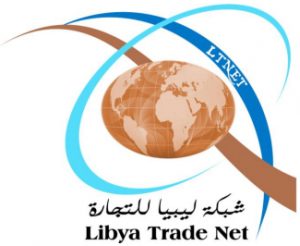 |
 |
 |
- La mise en œuvre du nouveau système informatique de dédouanement Sydonia++ de la CNUCED (Commission des Nations Unies pour le Commerce et le Développement)
- L’installation de scanners dans les principaux points de dédouanement (ports de Toamasina et aéroport d’Ivato) au titre de la sécurisation de la chaîne logistique du commerce international à partir du mois de juillet 2005 ;
- La continuation sous une forme encore plus innovante de la collaboration de la douane malgache avec la SGS à travers la création de la société malgache GasyNet.
- La facilitation des opérations en douanes par l’utilisation des moyens technologiques modernes ;
- La modernisation de l’Administration des Douanes ;
- La participation active dans l’intégration régionale.
- participer aux efforts de simplification et de facilitation des procédures administratives,
- compléter (si besoin) les dispositifs en place en comblant les processus non informatisés, et en reliant les systèmes entre eux,
- établir les fondations d’un système e-gouvernement,
- et finalement, assurer, de la meilleure façon que possible, la pérennisation de l’ensemble.
- La mise en place du Bordereau de Suivi des Cargaisons (Cargo Tracking Note) qui permet à la Douane de préparer et d’anticiper les opérations de dédouanement (www.bscmg.com)
- La mise en œuvre et la gestion des scanners des sites de Tamatave, Ivato, Majunga, Tuléar et bientôt Soarano qui, utilisés en combinaison avec des outils de gestion de risque permet de faciliter les contrôles et sécuriser les échanges commerciaux. Cela contribuera par ailleurs à l’augmentation de la compétitivité et de l’attractivité des ports et aéroports malagasy.
- La mise en place de la plateforme informatique TradeNet (juin 2007) qui relie tous les acteurs de la procédure de dédouanement pour faciliter les échanges de données et aboutir à une simplification et une sécurisation de tout le processus.
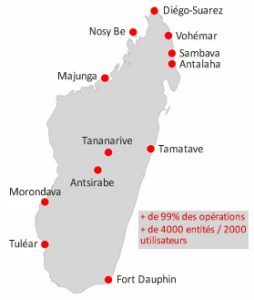 Le système TradeNet et ses perspectives
Le système TradeNet couvre actuellement les principales villes du pays (Antananarivo, Toamasina, Mahajanga, Antsiranana et Toliary), ce qui représente près de 98% du volume des opérations d’importation.
Il relie d’une part les commissionnaires agréées aux différents bureaux de douane, et d’autre part les bureaux de douane aux terminaux à conteneurs, aux sites scanner et inspection pour les formalités de contrôle, et au système bancaire pour le règlement des droits et taxes (banques primaires, banque centrale et Trésor).
Des projets sont en cours pour :
Le système TradeNet et ses perspectives
Le système TradeNet couvre actuellement les principales villes du pays (Antananarivo, Toamasina, Mahajanga, Antsiranana et Toliary), ce qui représente près de 98% du volume des opérations d’importation.
Il relie d’une part les commissionnaires agréées aux différents bureaux de douane, et d’autre part les bureaux de douane aux terminaux à conteneurs, aux sites scanner et inspection pour les formalités de contrôle, et au système bancaire pour le règlement des droits et taxes (banques primaires, banque centrale et Trésor).
Des projets sont en cours pour :
- d’une part, étendre le système sur 6 autres villes, Antalaha, Betainomby, Morondava, Nosy-Be, Sambava et Vohémar,
- d’autre part, y ajouter les consignataires de navire, les différents organes de contrôle, les différentes administrations concernées par la procédure de dédouanement et l’Institut National des Statistiques,
- et finalement, en élargir le champ d’application à d’autres Administrations.
- la réduction du délai de dédouanement qui se situe aujourd’hui, et dans 90% des cas, à 1 jour ouvrable pour les expéditions aériennes et 2 jours pour les expéditions maritimes ;
- l’augmentation de la transparence au sein de la procédure ;
- le renforcement de la collaboration entre l’Administration des Douanes et le Secteur Privé dans le cadre d’un processus d’amélioration continue des performances,
- et la progression des recettes douanières.
 |
 |
- assurer le secrétariat du Comité mixte et du Comité interministériel ;
- élaborer le projet de plan d’actions pour l’amélioration du climat des affaires au Mali et assurer le suivi de la mise en œuvre ;
- suivre la mise en œuvre des recommandations issues du Comité mixte et du Comité interministériel;
- préparer le projet d’ordre du jour et les dossiers à soumettre au Comité mixte et au Comité interministériel ;
- coordonner les travaux des Comités Techniques Restreints ;
- élaborer le budget pour la mise en œuvre du plan d’actions des réformes du climat des affaires ;
- prendre toute initiative visant l’amélioration de l’environnement et de la pratique des affaires.
- le Comité technique restreint des réformes du commerce extérieur (arrêté interministériel N°2011-1396/MIIC-MEF-SG du 30 mars 2011) ;
- le Comité technique restreint de création d’entreprises et de paiements des taxes (arrêté interministériel N°2011-2811/MIIC-MEF-SG du 15 juillet 2011) ;
- le Comité technique restreint du transfert de propriété (arrêté interministériel N°2011-3397/MLAFU-MIIC-MEF-SG du 17 août 2011) ;
- le Comité technique restreint de la réforme du permis de construire (arrêté interministériel N°2011-3980/MLAFU-MIIC-MEA-MEE-SG du 4 octobre 2011) ;
- le Comité technique restreint pour la réforme du cadre des affaires – composante Justice (arrêté interministériel N°2011-4371/MJ-MIIC-MEF-SG du 2 novembre 2011) ;
- le Comité technique restreint pour l’accès au crédit qui est en cours de création.
 |
 |
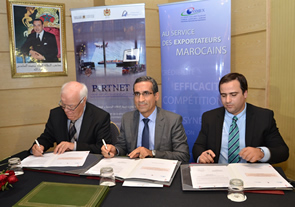 maroc_portnet_plaquette
maroc_portnet-Rapport-de-la-Journuee-dInformation-03-11-14
maroc_portnet_plaquette
maroc_portnet-Rapport-de-la-Journuee-dInformation-03-11-14 |
 |
 |
- Closer relations among foreign trade stakeholders;
- Improved working conditions;
- Simplification and harmonisation of procedures;
- Reduction of costs and time;
- Introduction of new technologies in the administration and trade circles.
- General information on ORBUS procedures ;
- Data capture assistance ;
- Technical assistance;
- Online resolution of hitches ;
- Monitoring of files ;
- Reporting of hitches or belated processing;
- Any other information or assistance related to the running and use of the ORBUS System.
- A Call Centre open Monday through Friday from 8h30 to 17h30
- A user space in the Web site www.gainde2000.sn
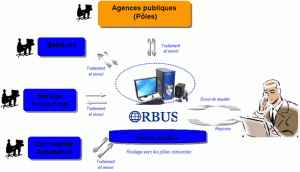
 |
 |